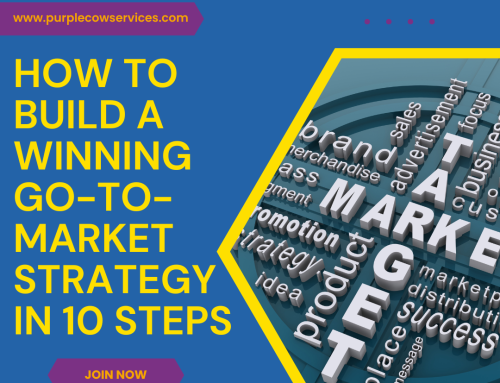Over the past three decades, numerous innovative products, developed by brilliant minds, have faced setbacks and often failed to reach their full potential in the market.
Share This Story, Choose Your Platform!
It’s a familiar story: a promising program, service, or business initially captures our attention but ultimately falters. In many cases, these failures occur shortly after a product’s launch. In this article, we will explore the five key pillars of a successful go-to-market (GTM) strategy that help eCommerce businesses navigate the complex path to growth.
What is the go-to-market strategy?
A go-to-market (GTM) strategy is a comprehensive plan that outlines how a company will bring its products or services to market, reach its target customers, and establish a strong market presence. It encompasses the various activities and tactics a company employs to successfully launch and sell its offerings, from product development and positioning to sales and marketing strategies
The goal of a go-to-market strategy is to enable a company to introduce its products or services successfully, generate demand, acquire customers, and ultimately achieve sustainable growth. GTM strategies are tailored to the specific needs and characteristics of the company, its target market, and its offerings. Successful execution of a well-crafted GTM strategy can be a critical factor in a company’s success, particularly in competitive markets.
The Five Pillars of GTM
Product analysis, product messaging, the sales proposition, marketing strategy, and the sales strategy are the main pillars of go to market strategy.
Product Analysis
Most brands find themselves in a constant state of evolution. New ideas and market responses can lead to shifts in a product’s value proposition and intended market. The first crucial step in creating a GTM strategy is to thoroughly understand the current state of your product. Assess its market potential as it stands today compared to your product roadmap’s future vision. This assessment will help you align your team’s expectations with the resources and marketing strategy required. Furthermore, it’s essential to examine your target users and create valid personas that guide your GTM strategy. Define the value you offer to users and ensure your market remains well-defined, recognizing that these aspects may evolve as your product develops.
Product Messaging
Crafting effective product messaging begins with a clear product positioning statement. This statement should describe your product’s class, target market, purpose, and unique features in comparison to competitors. While seemingly simple, creating a concise and compelling message can be challenging for most businesses. Additionally, a thorough evaluation of the competition and consideration of how your buyers and users differ is vital. Developing buyer and user personas forces you to understand how your audience perceives your product and makes purchasing decisions. At this stage, it’s crucial to define and defend the worth of your product, emphasizing the business case that will secure budget commitments.
Sales Proposition
In the realm of direct sales, eCommerce businesses must consider how messaging evolves across different stages of the sales cycle. Early-stage messaging should emphasize the business case, utilizing case studies and white papers as effective sales collateral. Mid-stage messaging shifts focus to your product’s competitive advantages, often presented through competitive product matrices. Late-stage messaging centers on the business relationship, featuring testimonials highlighting post-sales support value. Assess your current sales proposition’s alignment with the needs of your existing or targeted strategic accounts. Furthermore, evaluate pricing to ensure it clearly justifies the value and aligns with the competition.
Marketing Strategy
With well-defined user and buyer personas, you can create targeted audiences and a plan to reach them through appropriate advertising campaigns. Utilize demographic factors such as age, geography, income, job titles, affiliations, and online behavior to craft campaign audiences for testing. Digital marketing’s strength lies in its capacity to test audiences, messaging, and creatives across various advertising channels. Effective testing can be achieved with a limited budget, often starting with small budgets on platforms like Facebook. Agile marketing teams follow a sprint model to continually test channels, ad creatives, and targeting, leading to optimized conversion rates. Accurate outcome scoring enables informed decisions on digital budget allocation.
Sales Strategy
The final pillar focuses on the sales strategy. Begin by assessing your current sales pipeline’s accuracy in reflecting your sales potential and predicting future revenue. Define your partner strategy, identifying products that complement yours and exploring opportunities for joint marketing efforts. Consider how others can add unique value when selling your products. Effective business development often involves persuading others to sell on your behalf, and a well-defined partner strategy can amplify your reach. Additionally, evaluate your sales team’s composition, identifying required skills, sales cycle duration, and necessary compensation plans. Staffing decisions can significantly impact your sales forecast.
Execution
While a great product is essential, success ultimately hinges on effective execution. Crafting a robust GTM plan that integrates product analysis, product messaging, the sales proposition, marketing strategy, and sales strategy is key to avoiding common pitfalls and keeping resources focused. Collaboration, challenges to assumptions, and encouragement from the right team members can make all the difference. Even the brightest minds and the best ideas may encounter obstacles when bringing new technology to market. A well-executed GTM strategy provides the framework for transformative growth, enhancing your chances of success in the competitive eCommerce landscape.
Conclusion
In the fast-paced world of eCommerce, the path to success is often fraught with challenges and uncertainties. However, by following the five pillars of a well-structured go-to-market strategy, you can significantly increase your chances of not only surviving but thriving in the market.
It’s essential to remember that product analysis, product messaging, the sales proposition, marketing strategy, and sales strategy are not isolated elements but interconnected components of a holistic strategy. They must adapt and evolve alongside your product and market dynamics. As your product evolves, so should your GTM strategy.
Furthermore, the significance of execution cannot be overstated. Even the best-laid plans can falter without effective implementation. Building a dedicated and capable team, continuously challenging assumptions, and learning from mistakes are essential aspects of execution that can make or break a business.
Elevate your brand’s potential with Purple Cow’s Go To Market Strategies! Our expert team employs a proven five-pillar approach to drive your success. From in-depth product analysis to captivating product messaging, powerful sales propositions to strategic marketing, and finely-tuned sales strategies, we’ve got you covered. Let us help you stand out from the herd and make your mark in the market. Discover the Purple Cow difference today!
Share This Story, Choose Your Platform!
In This Blog:

















